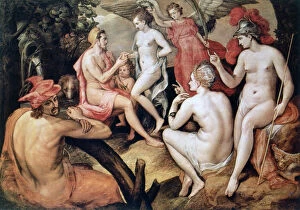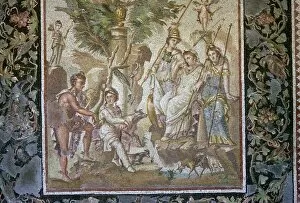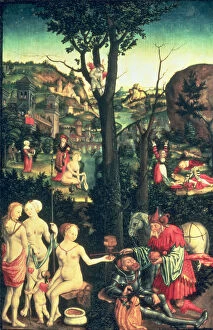Judgement Of Paris Collection (#3)
"The Judgment of Paris: A Tale of Beauty, Desire, and Divine Intervention" In the realm of Greek mythology
For sale as Licensed Images
Choose your image, Select your licence and Download the media
"The Judgment of Paris: A Tale of Beauty, Desire, and Divine Intervention" In the realm of Greek mythology, one story has captivated artists for centuries - the Judgment of Paris. This timeless tale unfolds through various artistic interpretations, each capturing its essence in a unique way. Giulio Bonasone's "The Judgment of Paris" transports us to ancient times with its intricate engravings. The scene is set as three goddesses - Hera, Athena, and Aphrodite - present themselves before the shepherd prince Paris. Their beauty radiates from the delicate lines etched on this masterpiece. Moving forward in time, we encounter "Paris Being Admitted to the Bedchamber of Helen" by an unknown artist. Painted with oil on canvas, it depicts a pivotal moment when Paris surrenders to his desires and embarks on a forbidden love affair that will change history forever. Delving deeper into this mythological narrative is "The Story of Oenone and Paris. " Created in the 1460s using tempera on panel technique, it portrays another facet of Paris' life - his ill-fated romance with Oenone. The vivid colors bring their tragic love story to life as they navigate betrayal and heartbreak. Adriaen Collaert's interpretation aptly titled "Judgment of Paris" showcases intricate details through meticulous craftsmanship. Each character's expression tells a story within itself as they await their fate at the hands of divine judgment. Taking a different approach is Jean Mignon's "The Judgment of Paris, " painted between 1535-55. With masterful brushstrokes and vibrant hues, Mignon captures the tension building up amongst gods and mortals alike during this climactic event. Pierre Langlumé brings us closer to modern times with his work titled "Mythological Gallery: Judgement of Paris. " Created around 1829-31, it reflects how the story of Paris continues to inspire artists across generations.









